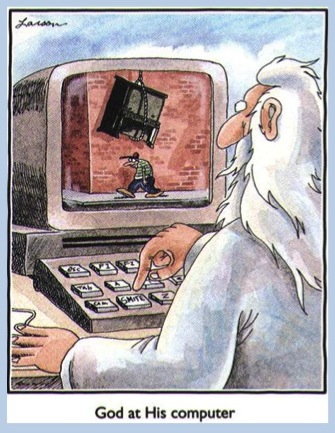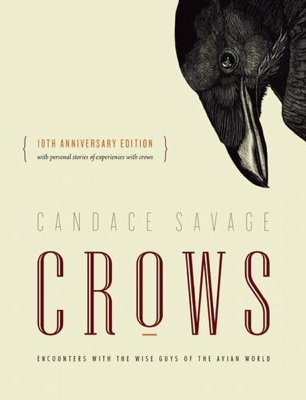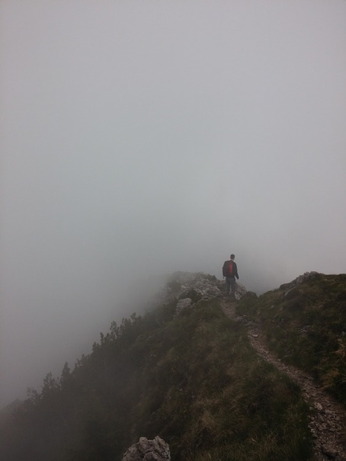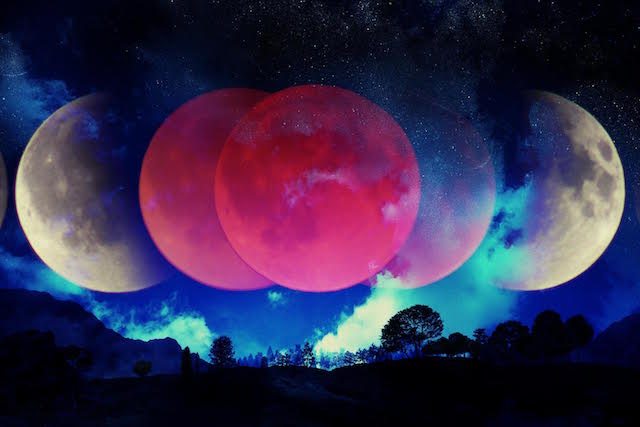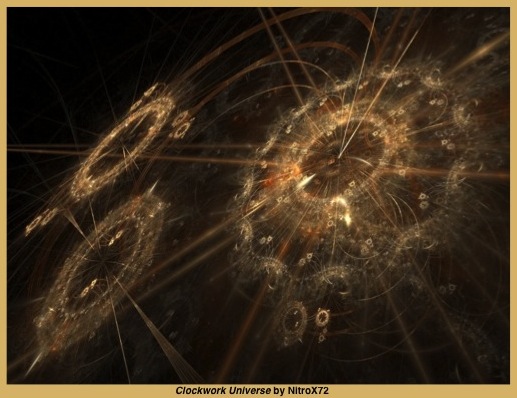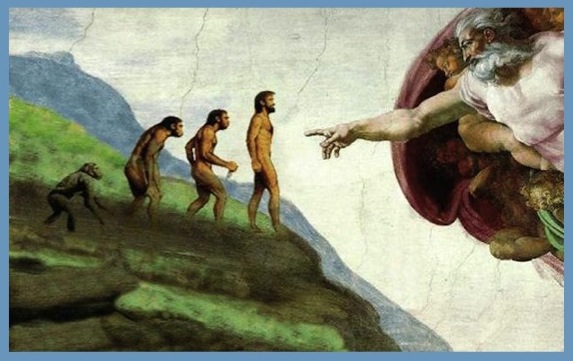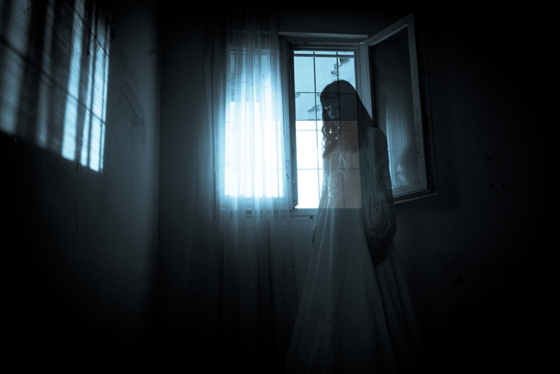
I have posted elsewhere about the sleep paralysis I experienced while living in an apartment in Venice, California. That was only one of the strange things that went on there, and my ex-roommates and I have often wondered what lay at the base of it all. One of our theories was that a ghost followed my friend, L., home from her mother’s house.
It all started when L’s grandmother Helen died. L’s parents, Jean and Vaughn, went back to Ohio to settle Helen’s estate. They spent a couple of weeks clearing out the house. The night before they returned home, they slept in Helen’s bed. Jean heard the closet door—which she’d firmly closed—squeak open. She said she’d never heard that door squeak before and it scared the hot holy hell out of her. She didn’t get out of bed to investigate because Vaughn was sound asleep and she didn’t want to disturb him, but she didn’t get much sleep after that, either.
As soon as it was daylight, she got out of bed and went to the closet. Looking inside, she noticed that part of the closet wall showed a gap that hadn’t been there before. When she peeked inside the crack, she saw it was a secret compartment with something inside. She pulled the compartment open and found some old letters and, more importantly, the picture of a little girl about ten or eleven. On the back of the picture was written “Velma” with birth and death dates. This girl turned out to be Vaughn’s older sister who had died at about the age shown in the photo and before Vaughn had been born. Helen was so distraught by her daughter’s passing that she wouldn’t let anyone talk about her and for years Vaughn hadn’t even known she’d existed. Jean and Vaughn were glad to find this picture. She said, “I guess Velma didn’t want to get left behind or Helen didn’t want us to forget her.”
So they took the picture back to California, framed it, and put it on a shelf in one of the bookcases they had in a small library alcove in their house. One day when Jean returned home and walked past the alcove, a bird was suddenly there, fluttering frantically about in panic. With great difficulty, Jean directed it across the room and out the sliding glass door. The alcove did have windows, but they weren’t open, and thin louvers even when they were, so it was a great mystery how the bird got in that out of the way alcove, of all places. Then one night they were sitting in the living room, about ten feet from the alcove, and Jean mentioned the bird incident. They heard an enormous thump on the floor and hurried into the library. A heavy book which had been shelved above Velma’s picture had somehow worked it’s way out of the bookcase and landed five or six feet away. The title of that book: The Myths and Superstitions of Great Britain.
There were other incidents regarding books in that alcove, but the coup de grace for L. was the day she visited her parents’ house to feed the cat. L. started thinking about Helen, and all of a sudden the room filled with the scent of Helen’s perfume. She fed the cat and got out the hell out of there real fast.
Eventually, Jean—who had felt closer to Helen than her own mother—got concerned that Helen (or maybe Velma) was earthbound. She hadn’t ever felt afraid of the presence in the house, but she didn’t want anyone to be stuck here. She said to the general cosmos inside her home, “I want you to know, Helen, that we’ll never forget you and we’ll never forget Velma. And it’s okay if you want to move on to wherever you need to go.” There really weren’t any more incidents after that.
But then L. started having weird things happen at her own apartment, and shortly after that we moved in together to yet another apartment. Weird things started happening there: keys or books or knick knacks went missing and wound up in odd places, strange noises and disembodied footsteps, a number of prankish things. We decided it might be Velma who had followed L. from place to place, for no other reason than that the things happening seemed childish in nature. I remember opening a cabinet door wide with the door flush against the wall. I dropped a plastic bottle on the floor, bent to pick it up, and when I raised up, the door had been moved to where my rising head smacked it hard. I yelled, “Velma! That really hurt! It’s not funny!†The pranks stopped after that.
But other, darker weirdness continued.
There was that sleep paralysis syndrome thing. It lasted through my tenancy in that apartment. I had one more incident within weeks after I moved—a farewell performance—and have never been troubled by it since, thank the gods.
None of us rested completely easy in that apartment. We all had troubled dreams and woke in terror. Heard things. Felt things. Saw things out the corners of our eyes and when first waking from sleep. Maybe there was something there.
Or maybe it was the power lines that ran directly over the roof of the apartment giving us EMF hallucinations. Maybe it was mold hidden in the walls poisoning the air we breathed and affecting our minds. Maybe it was psychic contagion—my roommates picking up on my nightmares and having their own—or an atmosphere of shared ghost stories seeping into the unconscious. All possible rational explanations.
But rational explanations are rarely as satisfying as the idea of Something There. That’s the thing about folklore and folktales. They satisfy some deep craving in human beings because they have a depth and resonance that science rarely achieves. After all, they come to us from the deep and dark archetypal chambers of the heart. All science has going for it is the sunlit mind of reason and sanity.
